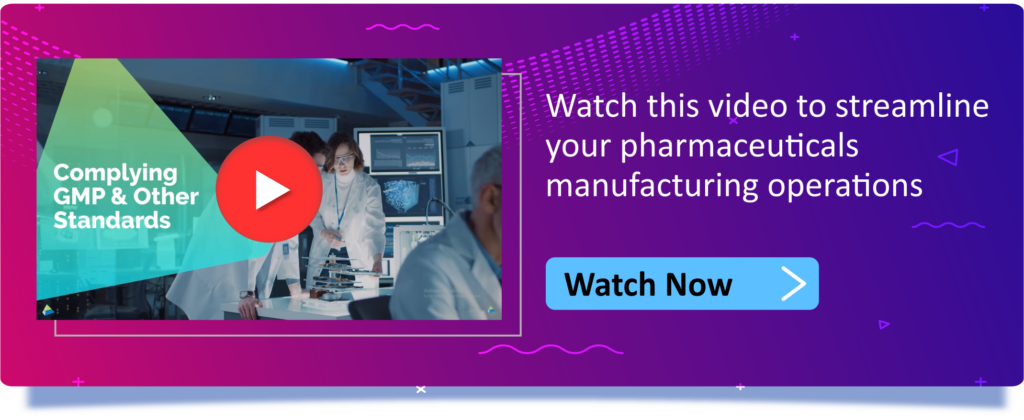
According to the Pharmaceutical Manufacturing Trends Shaping the Future, the pharmaceutical industry recorded $800 million in sales in 2020 and is predicted to grow at a 7.6% compound annual growth rate (CAGR) through 2026. Quite a big transition. Isn’t it??
Despite the current slowdown caused by COVID-19 in significant portions of the world, the pharma manufacturing market is expected to expand.
The root factors are simple: the growing and aging population, economic growth, and the emergence of new diseases and medical disorders.
The improvement in buying power and the availability of high-quality healthcare and medications to poor and middle-class families around the world, in addition to a growing population, is fueling the expansion of the global pharmaceutical business.
Pharmaceutical companies are investing in rare and specialized diseases which is again another factor driving this increase.
Investments have been drawn by advances in advanced biologics, nucleic acid medicines, cell therapies, and bioelectronics and implantable.
Continue reading the blog to know what the future beholds for the pharma industry –
Overview:
- Introduction
- The future of pharma manufacturing in 2023
- What do these predictions mean to your business?
Introduction:
In the past, many pharmaceutical companies emphasized over operations strategy, but this is now changing.
It is crucial for pharmaceuticals to carefully reconsider their long-term decisions in procurement, manufacturing, and supply chain in light of factors like the COVID-19 pandemic, inflation, geopolitics, new therapeutic modalities, and new ways of working.
Things that were once disintegrated, fragmented and disconnected are now automated, intelligent, and connected. Planning, inventory, warehouse, Production, Packaging, Distribution, and Delivery all are now connected and talk to each other seamlessly!
Although there are many intelligent solutions that connect business operations. However, one such game-changing radical is Pharma ERP software.
ERP in pharmaceutical industry enables companies to connect all of their manufacturing lifecycle phases. Its cloud version and mobile compatibility enable connected industry ecosystems, which over time improve customer experience, spur new heights of operational efficiency, and meet the demands of business today.
Considering the past ten years in specific, ERP for pharmaceutical manufacturing has embraced cutting-edge technical trends as well as cutting-edge solutions to address critical business challenges.
To make businesses easier to run and to keep them one step ahead of the competition, this software has been combined with trends like cloud computing, the Internet of Things (IoT), artificial intelligence (AI), etc.
Pharma ERP system will continue to be updated in the future with new concepts, features, functionality, technology, and trends as they appear on the market, allowing manufacturers to get even more value from their software investments.
In this blog, we shall take a look at all such future key trends- that are likely to dominate the pharma landscape- from a technology platform and architecture perspective.
[wp-video-popup
video=”www.youtu.be/l3OeyXsSNls”]

The Future of Pharma Manufacturing in 2023:
The pharma industry is witnessing a multitude of industry-specific and global trends. However, a few significant trends—including the development of digital and analytics tools—indicate a sector tailwind. The major trends for the year 2023 will be as follows:

1. Big Data will evolve:
Pharmaceutical manufacturers will adapt and conform to what is on the horizon as the global market expands.
Research and development data sets are expanding swiftly as a result of new and evolving global markets that also confront new competition.
Traditional paper tracking investigations in CAPA processing will move more rapidly and more affordably using digital solutions for data analysis.
The help of the pharmaceutical sector will rearrange its business models and will result in streamlining biopharma manufacturing, improving financial decisions, reducing human error, raising performance, and shrinking time to market.
All stages of the pharmaceutical value chain, such as drug development, clinical trials, logistics, commercialization, marketing, and pharmacovigilance, will also be improved by the technologies’ synergistic interplay.
2. AI and Big Data will combine Human Intuition with Machine Functionality
Machines can analyze big data quickly without being biased for any specific data individual identity. This results in accurate and precise data analysis.
For eg: Human reasoning alone could not solve the biochemical pathways of an anti-fungal drug that caused liver toxicity, but technology can.
Also, product waste and downtime on production floors are reduced due to artificial intelligence and robotics. Open transfer production processes have been replaced with single-use disposable substitutes for safer medication delivery and storage.
The shop floor can use AI to detect even the smallest change in air quality or temperature.
Any potential issue that could result in an expensive shutdown, a widespread product recall, or the need for equipment repair can also be identified before it harms the product, consumer, or the brand’s value.
3. Increased adoption of cloud computing
Large amounts of sensitive data can be stored safely using a cloud-based architecture. Additionally, it promotes information integrity, regulatory compliance, and data security.
It is projected that the cloud computing market in the pharmaceutical industry would grow significantly once legal limits and security concerns are resolved.
This technology also ensures the highest level of security and confidentiality during the clinical trial process. Want to know about one such amazing pharma ERP software on cloud? Click here.
4. Biosimilar markets will expand due to biologic patent expirations
Pharma manufacturers will transit to new markets to deal efficiently with legal, safety, and procedural criteria for biosimilars and will also address the public clamors for lowering drug pricing and focusing on making drugs available for all.
There will be anticipated growth in the global market for biosimilar medicines. Businesses will invest more in R&D in order to manufacture and commercialize biologic drugs and manage them once their patent protection expires.
5. Increase in Contract Developments, Collaborations, Mergers, and Acquisitions
Contract development and manufacturing companies will merge to expand globally, boost productivity, and improve speed.
The aging population, which increases the demand for generic medications and coincides with the expiration of drug patents, is another factor driving mergers and acquisitions.
Age old businesses are collaborating with forward-thinking emerging investment growth businesses. Also, the development of a new drug requires high early-stage investment.
At the same time, late-stage trials also require high investment and an ability to navigate complicated regulatory pathways—capabilities that larger pharma companies typically have.
These dynamics create an industry profile in which smaller, creative companies end up funding innovation.
Once their research becomes advanced, larger pharmaceutical companies enter the picture and team up with the new companies, looking for the next “new” thing and finalizing the resources required to fund expensive late-stage trials and large commercial marketing campaigns.
Hence resulting in more Mergers & Acquisitions.
6. Balance in Safety, Regulatory Requirements, and Meeting Manufacturing Demands by Modernizing, Digitizing, and Streamlining Applications
The pharmaceutical manufacturing platform or the shop floor operations are departing from obsolete paper-based applications.
The old operational systems are being replaced with new digitizing software that reduces human errors and accelerates manufacturing processes.
New mobile technologies and cloud solutions enable rapid communication from the front office to the workstation on the shop floor.
Teams can access needed information immediately to maintain quality and compliance while improving speed and efficiency.
7. Continuous Processing and New Mixing Technology
Mixing technology will increase the speed of continuous processing, which will turn raw materials into the finished product in minutes, while also improving the quality of data documentation, formula accuracy, and speed of continuous processing.
This will eliminate the need for large storage tanks and batch mixers.
In order to lower the danger of contamination in pharmaceutical manufacturing plants, there will be a major focus on keeping mixers hygienic…
8. Solid Dose Medications Stay Viable
Oral-dose pharmaceutical medicines are not anticipated to be replaced anytime soon by new technology. Solid dosages that patients are accustomed to are still in great demand and will keep growing.
The development of solid-dose pharmaceutical production is being driven by new solid-dose formats like gummies and increased productivity.
9. Sensors and Calibration Procedures for Instrument Verification
Pharmaceutical firms are discovering more about modern manufacturing facilities and are using automation with real-time analysis to replace the outdated manual batch processing and manual monitoring of quality control throughout the manufacturing process.
Measurements of flow, conductivity, temperature, pressure, calibration and verification sensors boost the safety of pharmaceutical products while saving time and money.
Recent advancements in temperature sensor technology allow for the elimination of pointless lab calibrations and recording of data.
10. Blockchain will continue to evolve
Blockchain has a large impact on the production of pharmaceuticals, medical supply monitoring and verification, recording fraud prevention, and research and development.
With this data, the technology enhances the supply chain visibility from beginning to end.
Blockchain bridges the gaps between stakeholders by giving everyone a precise, real-time perspective of the supply chain, ensuring the robustness of production and the supply chain.

What do these predictions mean to your business?
The expert predictions regarding the top pharma trends for 2023 suggest that your business will have a mix of both- options and opportunities, as well as the challenges and complexities, with respect to the new technologies and ERP systems this year.
In order to explore and make the best use of these opportunities, and to deal with these challenges, you need the expertise of extremely skilled consultants who have rich experience in the field of ERP solutions.
The team at BatchMaster can guide you in this regard.
Get in touch with it to discuss how they can help you tap these ERP trends for 2023 – and beyond!





